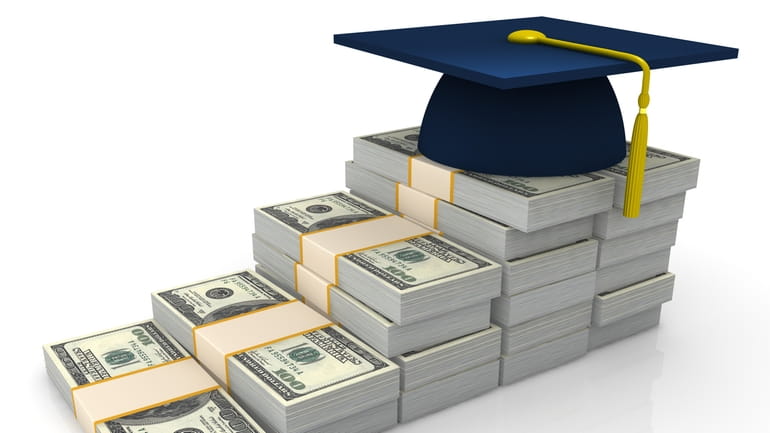Forgiving student loans must be targeted and limited to protect taxpayers

Credit: Getty Images/cogal
The idea of forgiving student loans heated up during the 2020 presidential campaign, when Bernie Sanders and Elizabeth Warren proposed dueling plans. Now, President Joe Biden is signaling readiness to respond with significant forgiveness to all but the wealthiest debtors.
The cumulative debt is huge with $1.7 trillion owed, up from $250 billion in 2004. Some 46 million people owe an average of $37,000. But only 13% of Americans have student loans, and fewer than 1% owe more than $100,000.
Repayment can be difficult or impossible, particularly for borrowers who failed to get the degree, career, and income they sought, those who’ve faced hardship, and those who work low-paying but crucial jobs.
But forgiven federal student loans would have to be paid for by taxpayers, many of whom eschewed college because of cost, or chose cheaper public universities or community colleges that didn’t require loans, or worked second jobs to avoid or repay borrowing. Asking them to pay the loans of others feels unfair, particularly because so many who didn’t attend or borrow have less wealth than those who would benefit.
THE CASE FOR CANCELLATION
Since 1990, average tuition and fees for higher education have increased 130% — after inflation. This is partly due to the campus arms race of increasingly luxurious lodging, food and facilities. At private and for-profit colleges, some of the hike reflects incautious borrowing by students. But at public colleges and universities, the share of those schools’ revenue contributed by students doubled since 1988, while the share from state and local governments dropped 35%.
Many 18-year-olds are not financially savvy. Neither are many parents, who only want the best for their kids. Big loans can stymie a college graduate’s progress for decades, and cannot be discharged in bankruptcy.
Many borrowers are trapped paying interest rates far above those for homes and cars. Many more may find college unaffordable if rates continue to rise.
The two main federal government programs to grant debtors relief have been widely criticized as ineffective. Three million student loan borrowers are eligible to apply for the Public Service Loan Forgiveness program, but just over 200,000 have applied. Most are rejected, often improperly, by the program’s administrators — for-profit companies that frequently fail to properly track repayments and grant forgiveness.
Most borrowers are eligible for the REPAYE Plan, which limits payments to 10% of discretionary income, defined as 150% of the poverty line. A single person would pay 10% of their earnings above $19,320. The program also cancels the balance for steady payers after 20 to 25 years. But it’s in shambles, too, because private loan servicers who manage it often fail to track repayments, deny earned forgiveness, and steer borrowers away from plans.
THE COUNTER ARGUMENT
With student loan repayments and interest frozen from March 2020 through this August, loan holders already got a big break.
About half the money owed is for graduate school, and those borrowers should have been more informed about the risks. Much of that borrowing paved the path to big incomes, with 71% of professional degree holders owing an average of $199,000.
Much of what’s owed is for room and board. Should we also reimburse those who did not attend college for food and shelter? Much of the debt was generated when students rejected affordable options like public schools over private, or commuting over dorms.
Broad cancellations or reductions of this debt mean repayment via taxes from small business owners, senior citizens, struggling families, and those who avoided loans.
Worst of all, canceling this debt would do nothing to fix a system that has millions more students applying to borrow money they’ll have difficulty repaying.
OUR TAKE
Broad student loan forgiveness is insupportable. A failure to provide targeted assistance already authorized is unacceptable. What’s needed:
- Proper vetting and oversight of schools allowed to accept federal student loan money.
- Keeping interest rates low for student loans regardless of market conditions, and lowering them on older, high-interest debt.
- Making schools responsible by penalizing them when their borrowers drop out or fail to repay.
- Making student loans dischargeable through bankruptcy.
- Improving marketing of existing programs that limit monthly payments to affordable levels based on income and forgive loans over time for public servants and other crucial workers earning lower salaries.
- Teaching financial literacy in high school, and explaining the dangers to borrowers.
- Restoring proper state and local support to public universities to make them affordable, and to community colleges to make them free.
Student loans, intended to better lives, shouldn’t ruin them. But neither should excesses of the imprudent, or debts of the prosperous, be put upon those who spent and borrowed only what they could afford.
MEMBERS OF THE EDITORIAL BOARD are experienced journalists who offer reasoned opinions, based on facts, to encourage informed debate about the issues facing our community.
